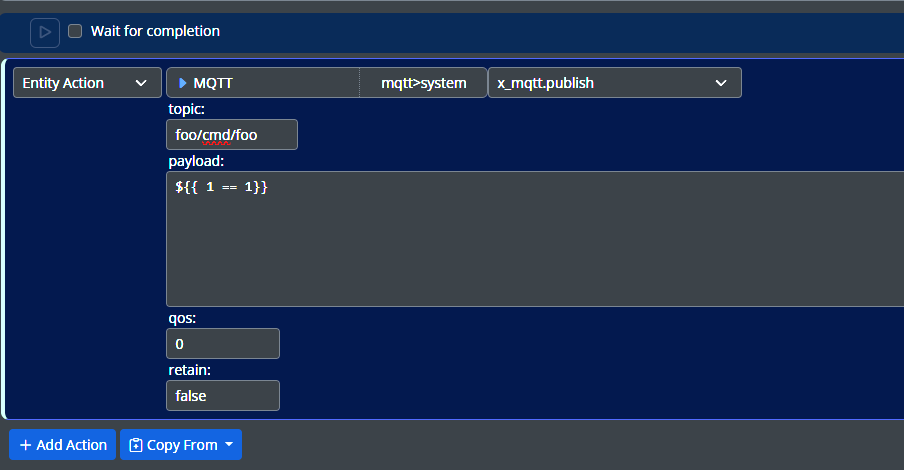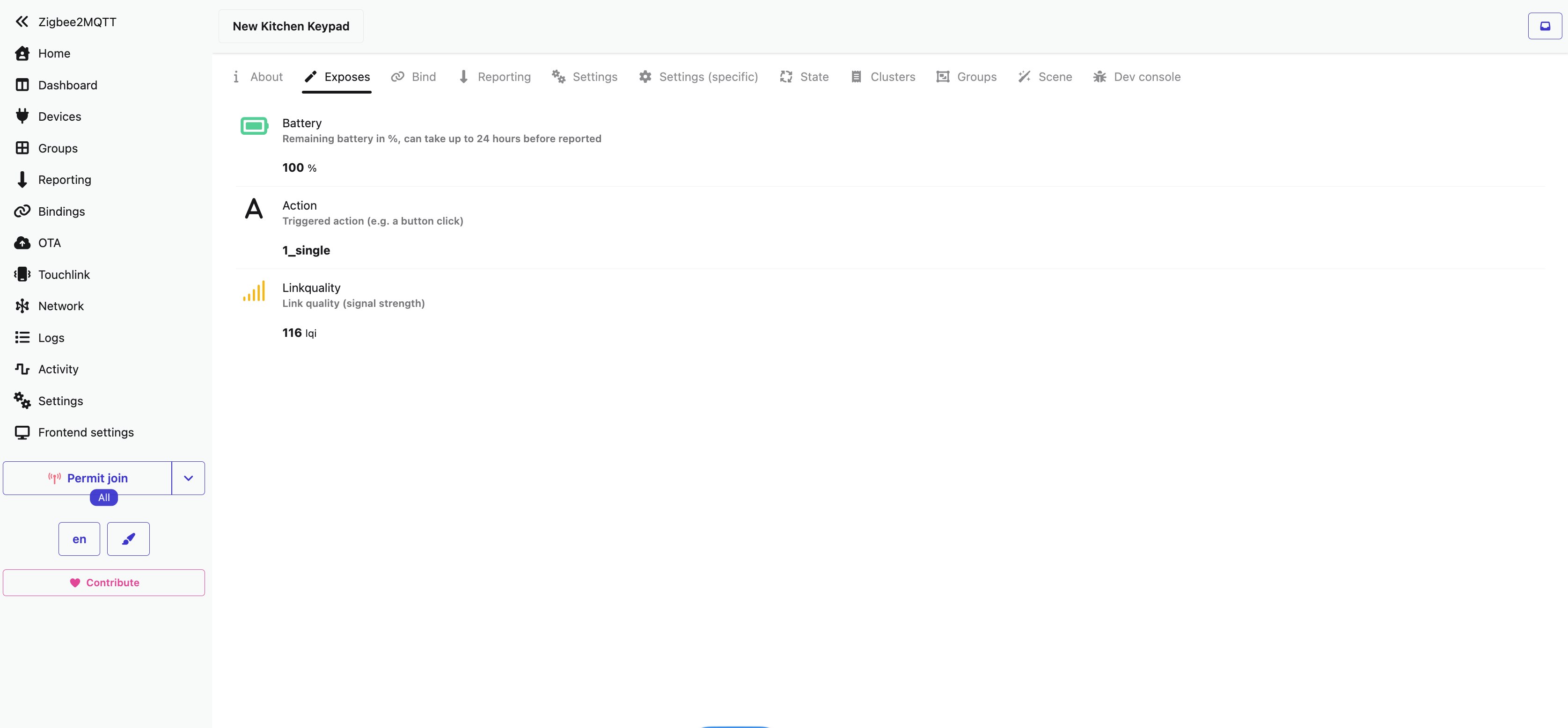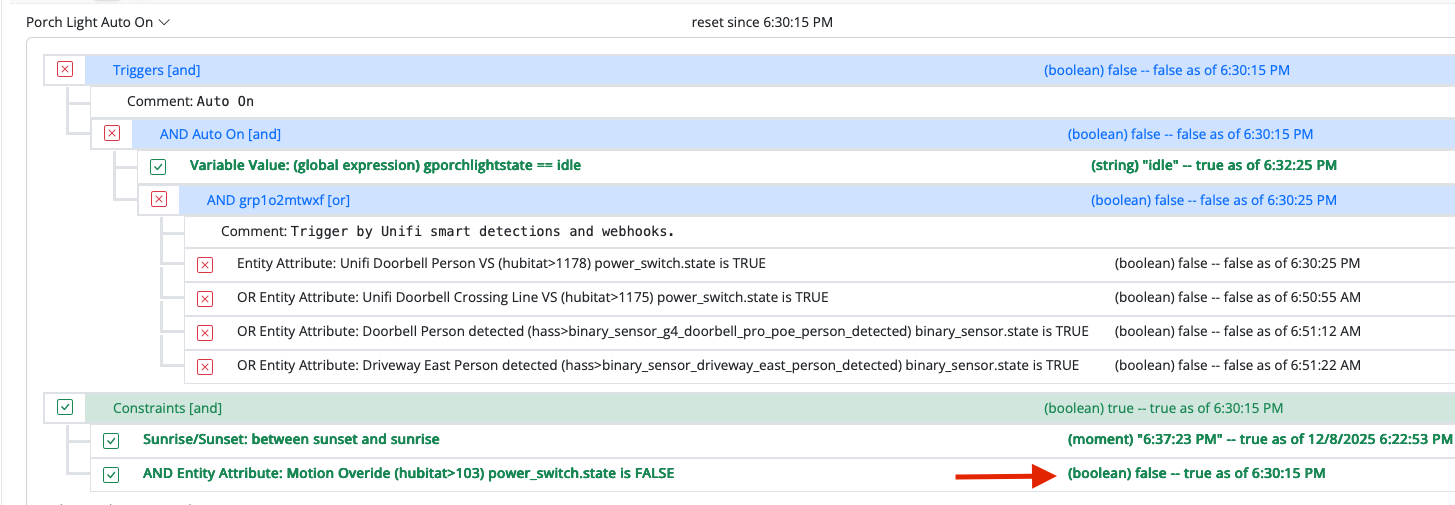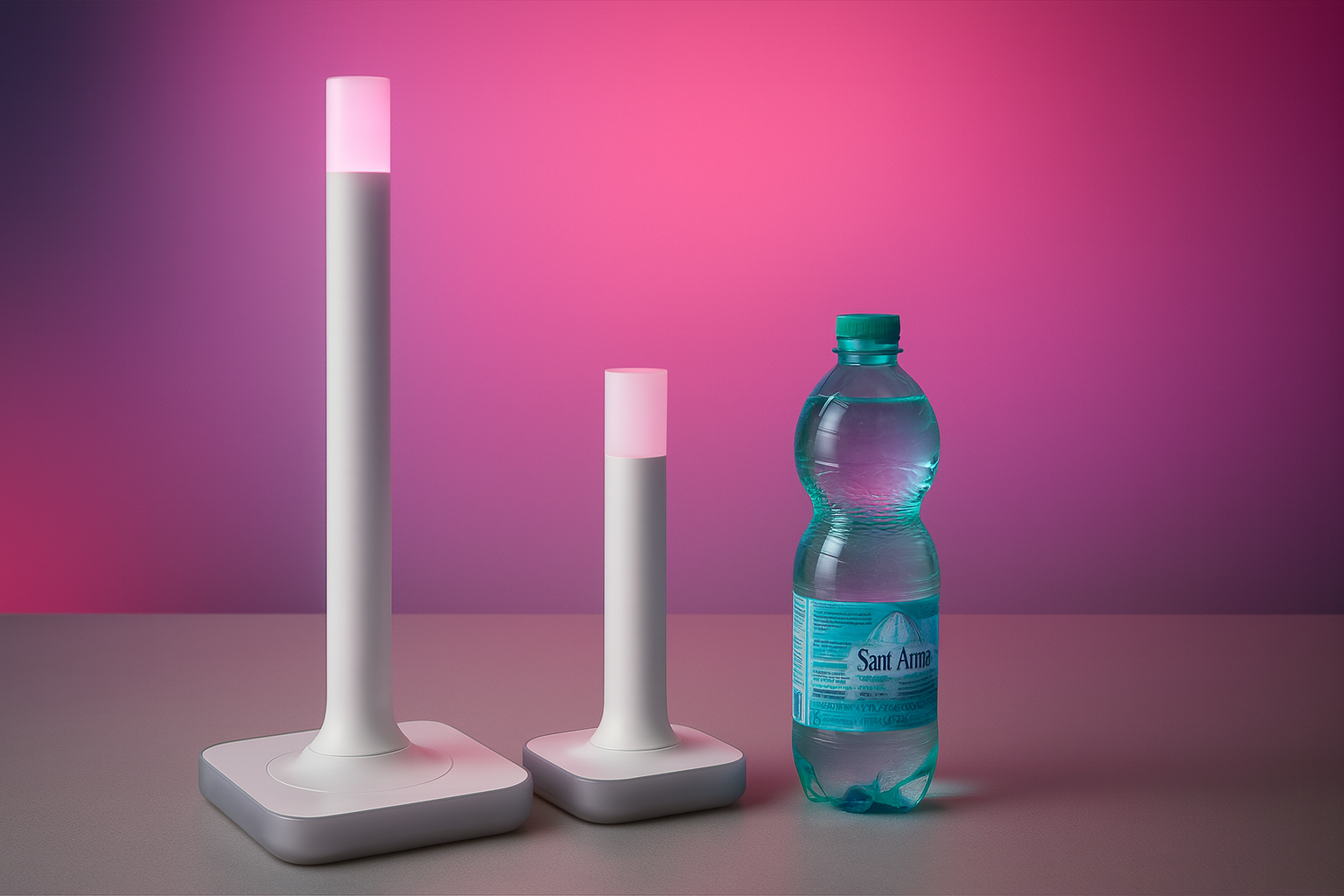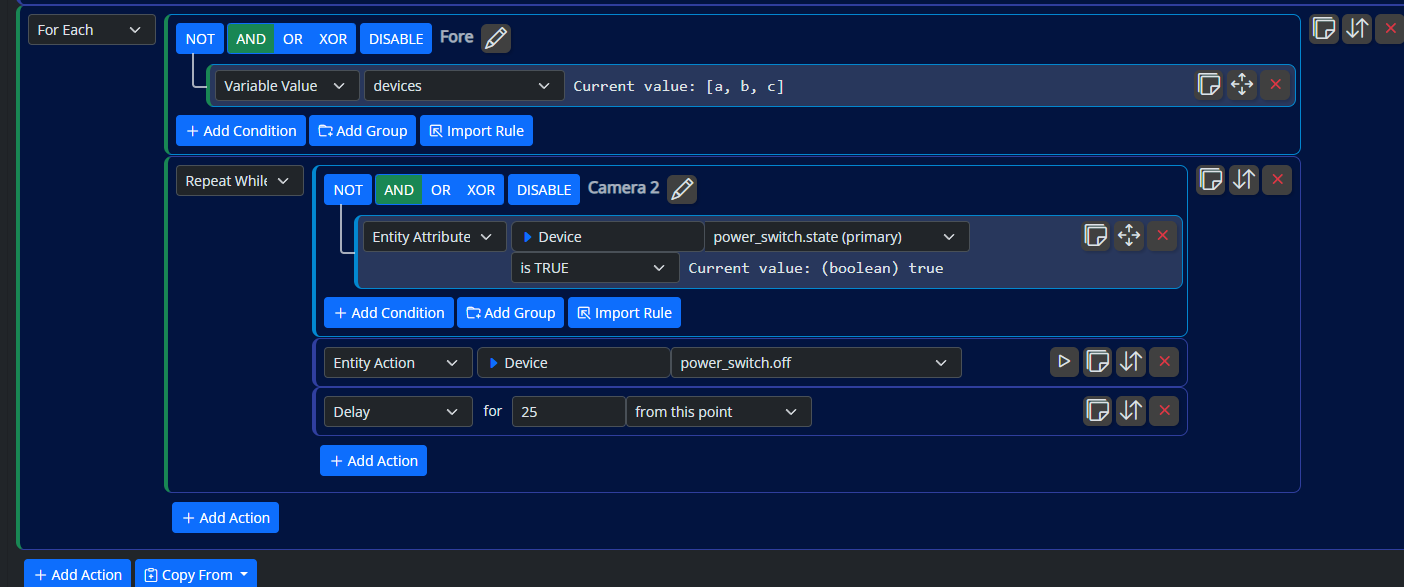therealdb
@therealdb
If you’re like me and still running HABridge to control your devices locally via Alexa, you might need to tweak your endpoints to call Reactor via HTTP. Here’s the best way to do it, IMO:
Insert the Reactor Canonical ID (e.g., zwavejs>71-1) into the MapID field, but make sure it’s URL-encoded like this: zwavejs%3E71-1.
Then, configure these endpoints as needed:
On: http://[ReactorIP]:8111/api/v1/entity/${device.mapId}/perform/power_switch.on
Off: http://[ReactorIP]:8111/api/v1/entity/${device.mapId}/perform/power_switch.off
Dim:
For lights: http://[ReactorIP]:8111/api/v1/entity/${device.mapId}/perform/dimming.set?level=${intensity.decimal_percent}
For roller shutters: http://[ReactorIP]:8111/api/v1/entity/${device.mapId}/perform/position.set?value=${intensity.decimal_percent}
Color: http://[ReactorIP]:8111/api/v1/entity/${device.mapId}/perform/rgb_color.set_rgb?red=${color.r}&green=${color.g}&blue=${color.b}
Just replace [ReactorIP] with your actual IP address. By using these placeholders, you can standardize your endpoints across all devices, making maintenance easier.
This setup works with any device mapped under MSR, regardless of the controller (ZWaveJS, Vera, HASS, OpenSprinkler, virtual, MQTT, DynamicEntities, etc.). If you need different calls, just go to the entities, get the action and parameters, and adjust accordingly. Enjoy super fast access to your devices via Alexa!
If you're migrating from Vera, the endpoints are (URL-encoded) in a file called device.db, in JSON format, under your config. You'd write a script to align the new endpoints to the new one, if you prefer to do it automatically. YMMV.
Just for the record, in case anyone is following, I'm really rather impressed.
I have installed one of these:
https://www.amazon.co.uk/dp/B0B6P22YJC?ref=ppx_yo2ov_dt_b_fed_asin_title&th=1
That's connected (physically) to the VM running on my Synology, with a 2m USB extension.
The same host also runs Openluup, Mosquito, HA Bridge.
Yesterday I installed Zigbee2mqtt. That was a bit of a PITA but mostly because of ports and permissions.
Once up and running, and the correct boxes ticked, immediately visible in Home Assistant via the MQTT integration, and thence into Reactor
I've only got two devices. I bought the cheapest sensor I could find, which is a door sensor. Dead easy to add to ZIgbee2mqtt and again, immediately visible in HA.
https://www.amazon.co.uk/dp/B0FPQLWRW1?ref=ppx_yo2ov_dt_b_fed_asin_title
The dongle is on the top floor of the house, and I wanted the sensor on the back door (just about as far apart as it's possible to get short of going into the garage) When I moved the sensor downstairs it dropped out pretty instantly (which wasn't a huge surprise) so quick bit of research found out that smart plugs will act as routers so...
https://www.amazon.co.uk/dp/B0FDQDPGBB?ref=ppx_yo2ov_dt_b_fed_asin_title
Took me about 30 seconds to connect. Updated the name. Instantly visible in Reactor with the new name pushed over from Zigbee2mqtt.
And lo, the door sensor now has a signal of 140 and works as far as I can tell perfectly and instantly (unlike my z-wave one).
A few more of those will be purchased and used to replace the Tuya wifi cloud devices and the (continually failing) Z-wave plugs (yeah, they were TKB so....)
Commended to the house. Thanks for everyone that got me on the right lines.
C
I have tried numerous ways to define a recurring annual period, for example from December 15 to January 15. No matter which method I try - after and before, between, after and/not after, Reactor reports "waiting for invalid date, invalid date. Some constructs also seem to cause Reactor to hang, timeout and restart. For example "before January 15 is evaluated as true, but reports "waiting for invalid date, invalid date". Does anyone have a tried and true method to define a recurring annual period? I think the "between" that I used successfully in the past may have broken with one of the updates.
Good evening all,
For about the past week or so, I've been having problems with a specific rule in my home automation that controls when my home goes from an Away mode to Home mode. One of the conditions it checked for was my alarm panel, when it changed from Armed Away to Disarmed. There seems to have been a firmware update on the panel that added an intermittent step of "pending", and I can't say for certain it happens 100% of the time.
Is there a way to write a condition that so it changes from one condition, to the next, and then another condition? As in, Home alarm changes from armed_away to pending to disarmed.
Thanks.
No idea how easy this would be. During my migration away from Z-wave I've been replacing the Z-wave devices with Sonoff which has broken some of my automations.
Any chance of a 'Test Reaction' function to call out which ones are broken because an entity no longer exists? Without actually running the reaction?
Or does this exist already and I'm just not aware of how to do it? Obviously I can see entities that are no longer available, but not quite what I'm looking for.
I guess it's something of an edge case so no huge issue.
TIA!
C
I'm sure this has been asked, and answered, but damned if I can figure it out
Use case: I have a rear garden with lights. A door from the kitchen into the garden and a door from the garage.
Currently if I open the kitchen door the lights come on (yay) and a 3 minute delay starts.
After 3 minutes, no matter what else happens, the lights go off (Boo! But also yay!)
What I would like is for the 3 minute delay until the lights go off to start from the latest door open event.
That is, if I'm going from kitchen to garage, and back again, the lights stay on until there's three minutes of no activity.
I've tried 'hacking' with a virtual switch, but can't seem to stop the delay.
Any pointers?
TIA
C
Hello oh great ones.
After a couple of hours messing with ports and permissions I have Zigbee2mqtt installed and running on my virtual pi
Can connect to the front end and everything
Odd one though, simply cannot get systemctl to work and the error is, well, unhelpful. The service file is this:
[Unit]
Description=zigbee2mqtt
After=network.target
[Service]
Environment=NODE_ENV=production
Type=notify
ExecStart=/usr/local/bin/node index.js
WorkingDirectory=/opt/zigbee2mqtt
StandardOutput=inherit
# Or use StandardOutput=null if you don't want Zigbee2MQTT messages filling syslog, for more options see systemd.exec(5)
StandardError=inherit
WatchdogSec=10s
Restart=always
RestartSec=10s
User=pi
[Install]
WantedBy=multi-user.target
Straight out of the docs with the change to point to my local node install (which we know works as it's the same as the very fine Reactor is using.
Running manually pnpm start
in /opt/zigbee2mqtt works fine
However:
catman@openluup:/etc/systemd/system$ sudo systemctl start zigbee2mqtt.service
Job for zigbee2mqtt.service failed because the control process exited with error code.
See "systemctl status zigbee2mqtt.service" and "journalctl -xe" for details.
Which I have
catman@openluup:/etc/systemd/system$ sudo systemctl status zigbee2mqtt.service
● zigbee2mqtt.service - zigbee2mqtt
Loaded: loaded (/etc/systemd/system/zigbee2mqtt.service; disabled; vendor preset: enabled)
Active: activating (auto-restart) (Result: exit-code) since Tue 2025-12-16 12:32:42 GMT; 4s ago
Process: 3093 ExecStart=/usr/local/bin/node index.js (code=exited, status=217/USER)
Main PID: 3093 (code=exited, status=217/USER)
and
-- A start job for unit zigbee2mqtt.service has begun execution.
--
-- The job identifier is 17477.
Dec 16 12:35:16 openluup systemd[3178]: zigbee2mqtt.service: Failed to determine user credentials: No such process
Dec 16 12:35:16 openluup systemd[3178]: zigbee2mqtt.service: Failed at step USER spawning /usr/local/bin/node: No such process
-- Subject: Process /usr/local/bin/node could not be executed
-- Defined-By: systemd
-- Support: https://www.debian.org/support
--
-- The process /usr/local/bin/node could not be executed and failed.
--
-- The error number returned by this process is ERRNO.
Dec 16 12:35:16 openluup systemd[1]: zigbee2mqtt.service: Main process exited, code=exited, status=217/USER
-- Subject: Unit process exited
-- Defined-By: systemd
-- Support: https://www.debian.org/support
--
-- An ExecStart= process belonging to unit zigbee2mqtt.service has exited.
--
-- The process' exit code is 'exited' and its exit status is 217.
Dec 16 12:35:16 openluup systemd[1]: zigbee2mqtt.service: Failed with result 'exit-code'.
-- Subject: Unit failed
-- Defined-By: systemd
-- Support: https://www.debian.org/support
--
-- The unit zigbee2mqtt.service has entered the 'failed' state with result 'exit-code'.
Dec 16 12:35:16 openluup systemd[1]: Failed to start zigbee2mqtt.
-- Subject: A start job for unit zigbee2mqtt.service has failed
-- Defined-By: systemd
-- Support: https://www.debian.org/support
--
-- A start job for unit zigbee2mqtt.service has finished with a failure.
Which strikes me as very odd.
Any blindingly obvious things I'm missing?
TIA!
C
Obviously a quiet forum, but perhaps it's time
I'm looking at rolling Zigbee into my system, in large part for the Aqara FP300 presence sensors which seem to finally provide a solution to if the wasp is actually in the box.
My current set up is as follows:
One Debian VM on Synology NAS running:
Z-wave Server
Open Luup
Multi system reactor
HA bridge
Mosquito MQQT broker
This machine has a UZB Z-wave stick connected via the USB port on the NAS
Another HAOS VM on the same NAS running HAOS
I've got some older Z-wave stuff that I keep around until it fails.
I have some Tuya stuff integrated in HA
My thought was to get either a SMLIGHT SLZB-06M
or an Aqara Hub M2
Integrate them via Zigbee2MQQT (running on the Debian machine) and then expose them in HA so I can continue to automate in MSR.
Thoughts on which of those devices wold be preferable long term. Both are POE capable which is good. It also appears I could add a USB dongle to the NAS and expose it to the HAOS machine.
Any thoughts from the assembled experts here? TIA
C
Another question to the hive mind. Prompted by the fact that I lost yet another z-wave device over the weekend due to a power issue. It looks like z-way server is reporting another device failed (although it's working fine) and message queue is far too long IMHO. Also the failed device has been removed in the expert interface, but still there in the 'normal' one. Sigh.
Currently I have z-wave, Tuya, thinking about Zigbee.... Does anyone use one single protocol for everything? Right now I'm feeling that as the z-wave stuff dies, I'm just gonna replace it with something else....
C
Not really Smart Home stuff, but going to ask as we have smart people...
Bear with me on this one. Asking here because of the font of knowledge!
For many eek years I have had a Virgin V6 box and a Raspberry Pi running Kodi connected to my TV through a cheap *** HDMI switch. It all worked beautifully but the absolutely critical thing was that the TV remote passed the signals back to the Pi to allow remote control of Kodi.
Couple of changes of late:
Installed a soundbar on the TV using the ARC (audio return channel). That then turns the soundbar on and off when the TV turns on and off and the TV volume control controls the soundbar volume direct.
Everything continues to work
Upgraded the software of the Tivo box to Virgin 360. This is literally software only. You get sent a snacky new Bluetooth remote hit 'upgrade' on the screen and off it goes.
Now, things are not playing well. Typically when I turn on to watch Kodi the soundbar comes on (as it should) but the TV either puts out sound through its own speakers and the soundbar, or just the soundbar. It's not possible to control the volume of the soundbar through the TV. Also it's not longer possible to control Kodi using the TV remote.
If I turn the TV360 box off, i.e. power it down, before turning on to watch Kodi, everything is fine.
This makes little to no sense to me. My assumption is that the cheap *** HDMI switch is getting something from the TV360 connection that it didn't used to get when the software was Tivo and that's screwing up the HDMI communications. I'm upgrading the switch to something a little less chap, but wondered if anyone could validate my theory at all?
TIA
C

